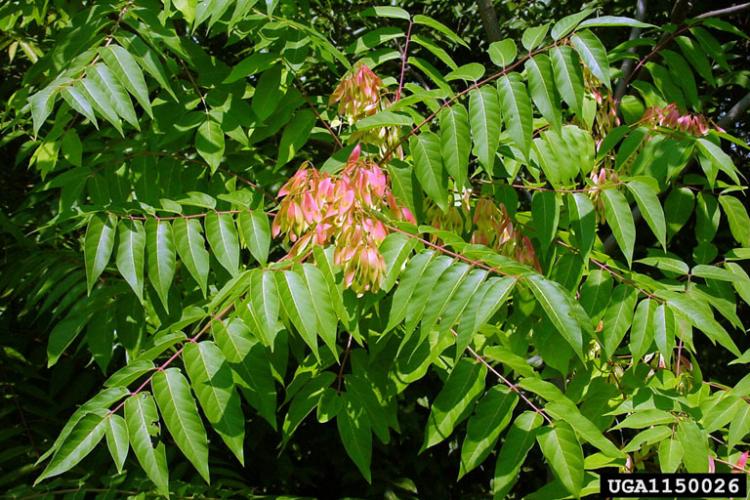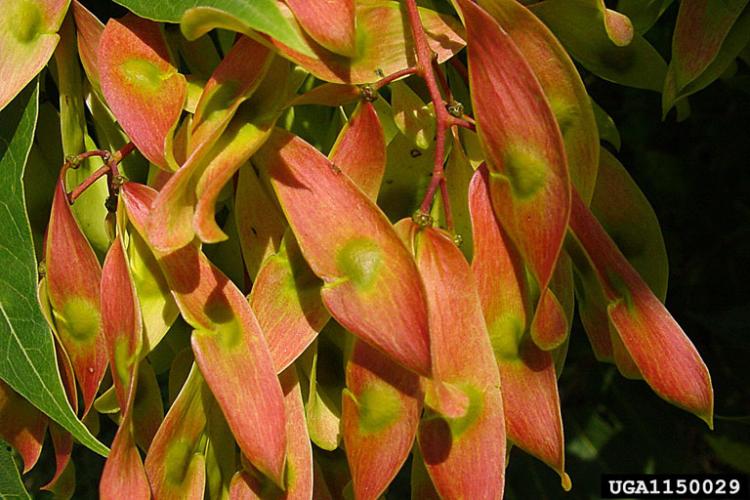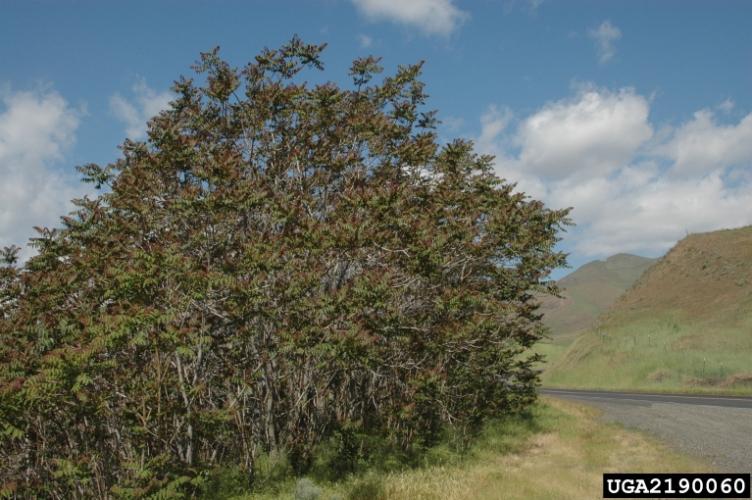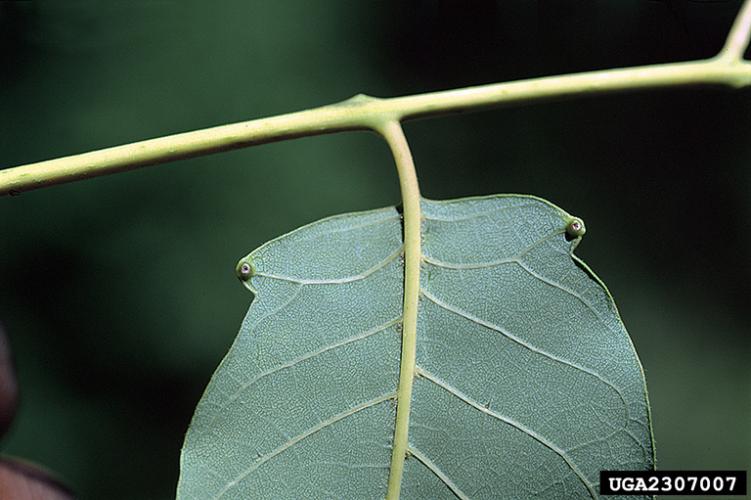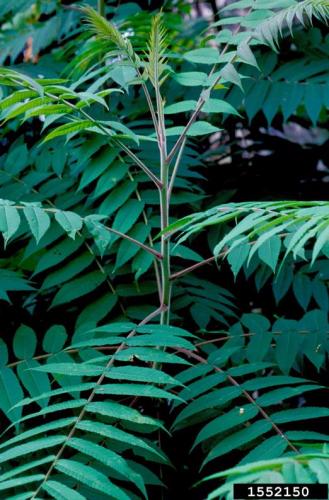Tree-of-heaven
Identification
Appearance
This rapidly growing tree can reach a height of 80 feet, with up to a six-foot diameter trunk. Leaves are pinnately compound with 10 to 41 leaflets with smooth leaf margins. When crushed, the leaves and other plant parts have a rancid smell like cat urine or burnt peanut butter.
Foliage
Foliage is one of the best identifying characteristics for this species. The leaves are pinnately compound and 1-4 feet in length with 10-41 leaflets. Ailanthus altissima resembles native sumac and hickory species, but it is easily distinguished by the glandular, notched base on each leaflet.
Flowers
Species is dioecious and flowering occurs in early summer when large clusters of yellow flowers develop above the foliage.
Fruit
Fruit produced on female plants are tan to reddish, single winged and can be wind or water-dispersed.
Biology
ECOLOGICAL THREAT
Ailanthus altissima forms dense, clonal thickets which displace native species and can rapidly invade fields, meadows, and harvested forests. This invasive tree species is extremely tolerant of poor soil conditions and can even grow in cement cracks. Ailanthus altissima is not shade tolerant, but easily invades disturbed forests or forest edges causing habitat damage. Introduced as an ornamental, it was widely planted in cities because of its ability to grow in poor conditions. Management and control efforts for this species continue across the United States at great economic cost.
Although this majestic tall tree is called tree-of-heaven, it is regarded as an invasive species that is capable of displacing native trees, poisoning root systems, damaging sewer lines with its roots, and producing a sap that can cause heart imflammation.
Additionally, this species is the preferred host of spotted lanterfly, an invasive insect not yet found in Vermont. Learn more about this connection from Penn State Extension.
ORIGIN
First introduced from its native China into the U. S. in 1751, it has since been planted throughout American cities because it is fast-growing, resistant to pollution, and provides ample shade. However, it is now considered quite invasive.
HABITAT
Forest, forest edges, shrublands, thickets, disturbed areas
LIFE CYCLE
Flowering occurs in early summer, when large clusters of yellowish flowers develop above the leaves, Fruit produced on the female trees are tan to reddish, single winged, papery seeds, called samaras. They may remain on the tree throughout late fall.
Vermont Distribution
How You Can Help
NATIVE/NON-INVASIVE ALTERNATIVES
Native sumacs and native maples
Report it!
This species is the preferred host of spotted lanterfly, an invasive insect not yet found in Vermont. Controlling tree-of-heaven could play a role in slowing the lanternfly's advance. Therefore, learning to identify tree-of-heaven is the first step in managing the pest's spread.
Tree of Heaven Community Science Project
Additional Information
Native Perennials and Shrubs for Vermont Gardens
Alternatives to Common Invasive Plants and Characteristics of Select Alternatives
Citations
PHOTO CREDITS
Tree of Heaven, UGA1150026, Chuck Bargeron, University of Georgia, CC 3.0
TOH fruit, 1150029, Chuck Bargeron, University of Georgia, CC 3.0
TOH glands, 2307007, James H. Miller, USDA Forest Service, CC 3.0
TOH infestation, 2190060, Chris Evans, University of Illinois, CC 3.0
Staghorn Sumac, 1552150, John Cardina, The Ohio State University, CC Non-com 3.0
